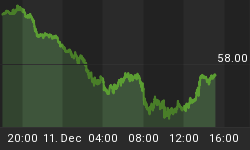ECB President Trichet jolted markets this morning when he downplayed the probability of a May rate hike after the "no change" announcement from the ECB's Governing Council. The two key comments in the President's post-meeting remarks were: that the high probability in the markets for a rate hike in May does not correspond to the Governing Council view; and that vigilance is not pronounced in the ECB monetary statement. This apparent back-pedaling triggered a swift adjustment in market expectations. However, those assuming that a May rate hike is now off the cards could be acting too quickly.
The rest of Trichet's comments, and indeed the tone of the ECB's monetary statement, were as hawkish as ever. The word "vigilant" was indeed absent, but all the other clues pointing toward higher rates were still there:
- With ample liquidity, the risks to price stability remain on the upside
- The stimulative effect of low rates remains the dominant factor behind high growth in money
- Borrowing by households is rising rapidly
- It is essential that medium-term inflation expectations remain firmly anchored
- Risks to economic growth over the near-term appear broadly balanced, but the latest data suggests that growth is strengthening in the first half
- Moderate wage trends have helped dampen domestic inflationary pressure so far; while the ECB has yet to observe second round inflation effects which would pose a high risk to price stability, once such effects are observed it's already too late to counter them
- The Council will continue monitoring all developments that relate to price stability
In other words, Trichet did not say "there will be no rate hike in May" but rather that the degree of market confidence in a May hike was overdone. The President said he spoke out today because the ECB considers it owes the markets "clarity and transparency." The Council members did not want to be boxed into a corner - better to get expectations back into line with the members' thinking sooner rather than later.
So, it's back to watching the data and the pronouncements of Council members, to ascertain whether the next hike will come on May 4 or on June 8. In terms of key data, there will be little to digest until the end of this month. On April 28 we get lending and M3 data for March, along with a slew of surveys on consumer, economic, and business climate sentiment, and also the flash estimate of April inflation. The pronouncements of Council members are likely to get more specific after the next, non-policy meeting of the Council, on April 20.
UK: Rates Still on Hold
As widely expected, the Bank of England's (BoE) Monetary Policy Committee (MPC) this morning left the repo rate unchanged for the eighth month running, at 4.50%. We will have to wait until the April 19 release of the minutes to see the details of the discussion and of the vote breakdown, but it's easy to guess at the parameters of the meeting from the data releases of the past few days.
First up, the housing sector still looks too susceptible to stimulus for any near-term interest rate cuts. At the February meeting, the Monetary Policy Committee had specifically noted that any further easing risked re-igniting the housing market. According to the house price index from Halifax (the nation's largest mortgage lender) prices jumped 0.9% last month to take the annual rate of increase in the three months to March up to 6.2%, its highest in eleven months (5.5% in February). Last week, the Nationwide house price index also revealed a jump in prices to the highest annual increase in almost a year. On the other hand, BoE data showed approval for home purchases - a leading indicator of house prices six months out - fell in February for the first time since October 2004, while mortgage lending rose by much less than expected. These data suggest that the recent recovery in the housing market may be moderating, a trend the BoE will want to see continue.
The service sector is still performing strongly. Although the CIPS service sector PMI slipped to 57.4 in March from 58.9 in February, this is still well over the expand/contract level of 50.0. More interesting for the BoE, high energy prices are pushing up service companies' costs at their fastest rate in six months, and businesses are starting to pass these costs on to their customers.
Manufacturing production slipped 0.2% on the month in February, the first monthly decline since last October, although it appears much of this was driven by drug production coming off near-record levels. Wider industrial production fell 0.3% on the month. Earlier this week, the CIPS manufacturing sector PMI eased to 50.8, barely into positive territory, with the output and new orders indicators both slipping to 51.6 (the lowest since last summer). Input prices, on the other hand, continued to rise sharply, hitting 64.5 last month (65.7 in February).
The data are still mixed as to the extent and strength of the economic recovery, but there are enough signals coming from the housing market and from energy prices to make the MPC balk at a near-term rate cut. Some members of committee have expressed particular concern that soaring utility bills could encourage inflationary pay demands. As we've noted before, it's not clear just where the economy will be come Q4, and hence where interest rates are headed going into 2007. For now, it's still safe to assume no change in the repo rate until then.
Data-wise, March PPI numbers come out on April 10, followed by average earnings on April 12. The minutes from today's MPC meeting will be published on April 19, with March CPI on April 20 and retail sales on April 24. Preliminary Q1 GDP is due for release on April 26. April's mortgage lending and credit data come out May 4, the same day as the next BoE rates decision.
















